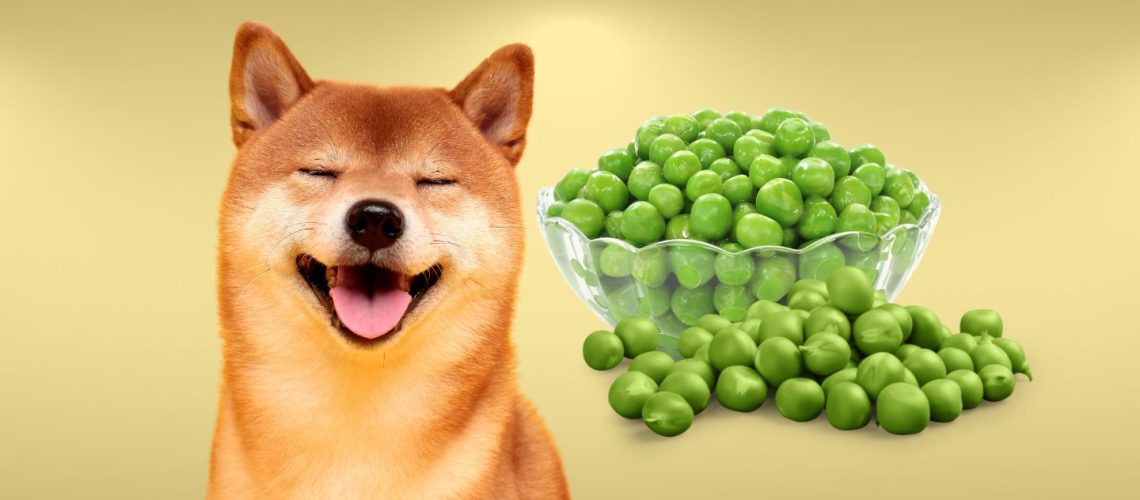The short answer is yes, dogs can eat green peas. In fact, green peas can be a healthy and nutritious addition to a dog's diet. However, there are a few things to consider before feeding your dog green peas.
Benefits of Green Peas for Dogs
Green peas are a good source of vitamins, minerals, and antioxidants, which can help support a healthy immune system and promote overall good health. They are high in fiber, which can help support healthy digestion. Green peas are also rich in protein. While plant-based, this protein is still beneficial to dogs.
Nutritional Content of Green Peas
Green peas are packed with nutrients that can benefit your dog's health. They contain vitamins A, C, and K, as well as minerals such as iron, manganese, and potassium. The antioxidants in green peas can help protect your dog's cells from damage, while the fiber plays a crucial role in maintaining healthy digestion.
Supporting a Healthy Immune System
The vitamins, minerals, and antioxidants found in green peas can help support your dog's immune system, making them less susceptible to illness and disease. By incorporating green peas into your dog's diet, you can provide essential nutrients that contribute to their overall health and wellbeing.
Promoting Good Digestion
Green peas are a great source of fiber, which is important for maintaining healthy digestion in dogs. Fiber helps regulate bowel movements by adding bulk and providing a feeling of fullness. As a result, feeding your dog green peas can promote better digestion and help prevent constipation.
Potential Risks of Feeding Dogs Green Peas
While green peas are generally safe for dogs to eat, there are a few potential risks to consider. For example, green peas can be a choking hazard for small dogs. Additionally, some dogs may be sensitive to green peas, so it's a good idea to introduce them slowly and watch for any adverse reactions.
Choking Hazard for Small Dogs
Green peas can pose a choking hazard, especially for small dogs. To minimize this risk, be sure to monitor your dog while they eat peas and consider mashing or pureeing the peas for easier consumption.
Sensitivity and Allergic Reactions
Some dogs may be sensitive or allergic to green peas, resulting in gastrointestinal issues such as diarrhea, vomiting or stomach upset. When introducing green peas to your dog's diet, start with a small amount and watch for any signs of an adverse reaction. If your dog exhibits symptoms of an allergic reaction, discontinue feeding peas immediately and consult your veterinarian.
Portion Size for Feeding Dogs Green Peas
As with any new food, it's important to introduce green peas to your dog's diet gradually, starting with a small amount. The exact amount will depend on your dog's size and activity level, but as a general rule, green peas should only make up a small portion of your dog's diet. A good rule of thumb is to start with about 1/4 cup of green peas per 20 pounds of body weight and adjust the amount as needed.
Introducing Green Peas Gradually
When adding green peas to your dog's diet, it is important to do so gradually to avoid any gastrointestinal issues. Begin by offering a small amount of peas mixed in with your dog's regular food, and gradually increase the portion size over time. This slow approach helps your dog's digestive system adjust to the new food.
Portion Size Guidelines
In general, green peas should only make up a small portion of your dog's diet. Start with about 1/4 cup of green peas per 20 pounds of body weight, adjusting the amount according to your dog's size, age, and activity level. As always, it's best to consult with your vet to determine the appropriate portion size for your individual dog.
Consult Your Veterinarian
It's important to consult with your veterinarian before making any changes to your dog's diet, including adding green peas. Your vet can provide personalized advice based on your dog's specific needs and health conditions.
Conclusion
In conclusion, green peas can be a healthy and nutritious addition to a dog's diet. However, it's important to feed them in moderation and watch for any potential risks or adverse reactions. As always, it's best to consult with your vet before making any changes to your dog's diet.











